Chance Encounters, Edition 9
Summertime
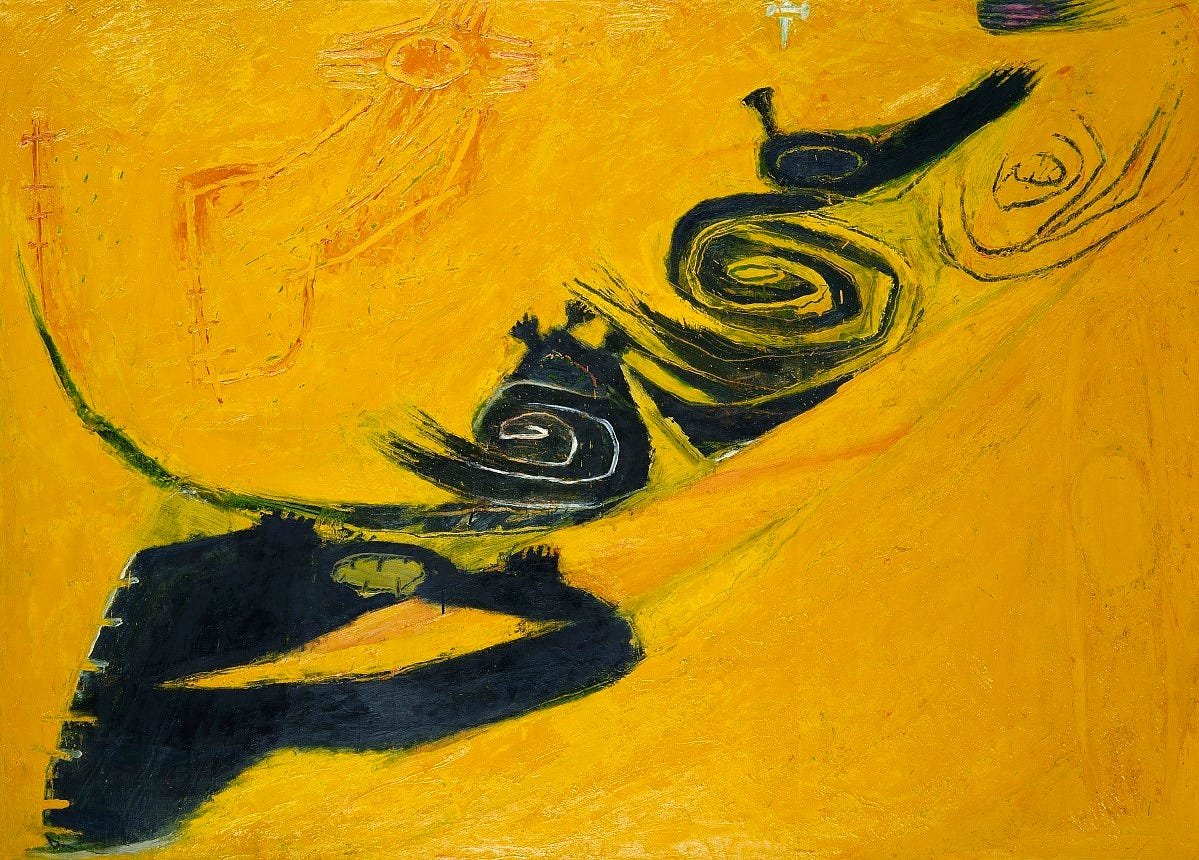
In honor of the advent of Summer and inspired by my own recent vacation, I’ve collected a variety of summery images that I enjoy. Which works speak of summer to you? Are you a beach person or do you prefer cool mountain streams? Which pastimes – fishing, yard games, surfing, something else, do you enjoy?
Summer by American artist Frank Lobdell suggests to me the heat and bold contrast of sunlight and shadow of high summer. At the same time the black forms swirling across the center of the canvas make me think of patterns on water caused by swimmers. Are these black forms an abstracted figure? Lobdell was associated with the Bay Area Figurative Movement and participated in weekly figure drawing meetings throughout his career. The painting’s bold abstraction and the textures of the artist’s brush work, apparent even in reproduction, reflect Lobdell’s connection with a different artistic movement, Bay Area Abstract Expressionism.
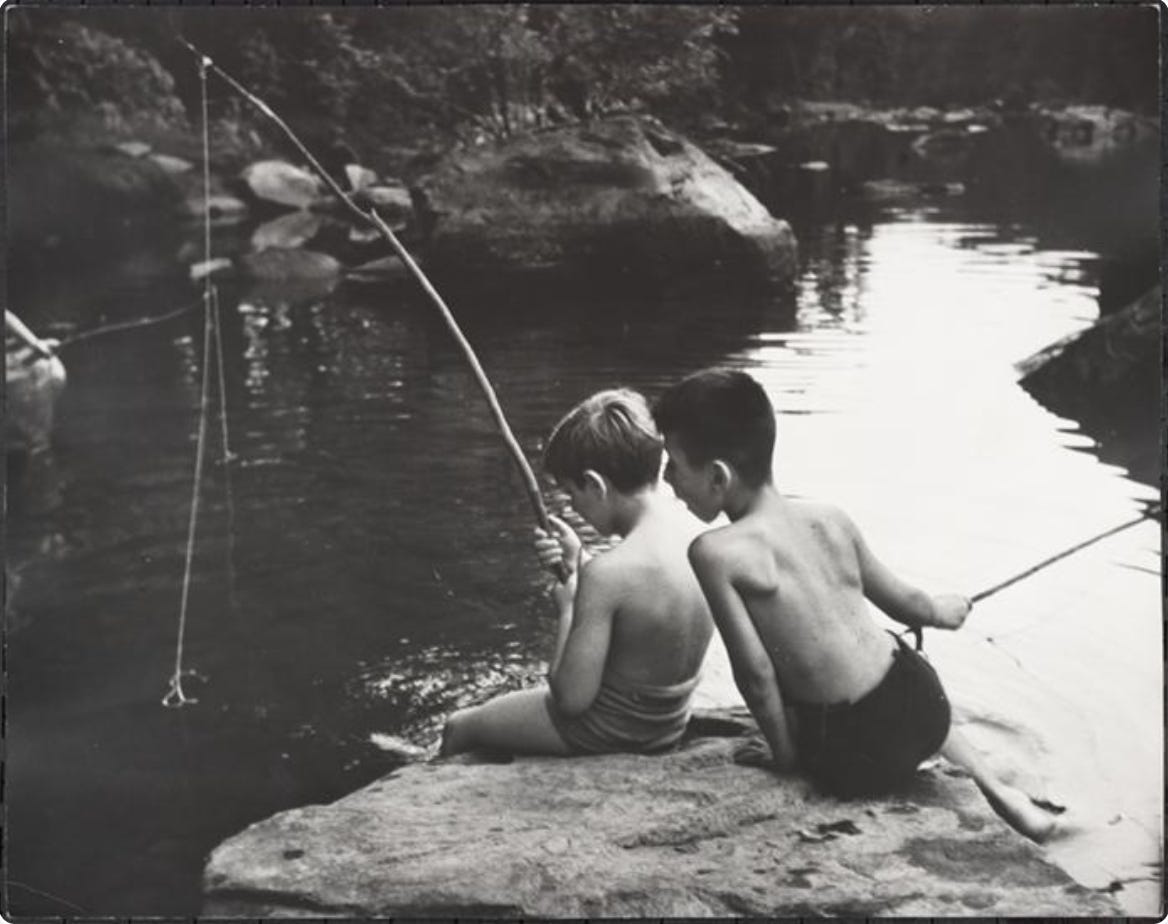
In a more realistic rendering of summer fun, Roy Perry shows two boys fishing in a rural stream. Perry served as head of photography at the National Institutes of Health for twenty-five years, but captured this image a couple of years before he began that career. The site of this photograph is Camp Moodna which was located in Mountainville, Orange County, New York. In the 1940s the camp welcomed children from New York City’s Lower East Side, under the sponsorship of Grand Street Settlement. Perry’s beautifully composed photograph balances light and dark and captures both the rural setting and the boys’ fascination with their pastime.
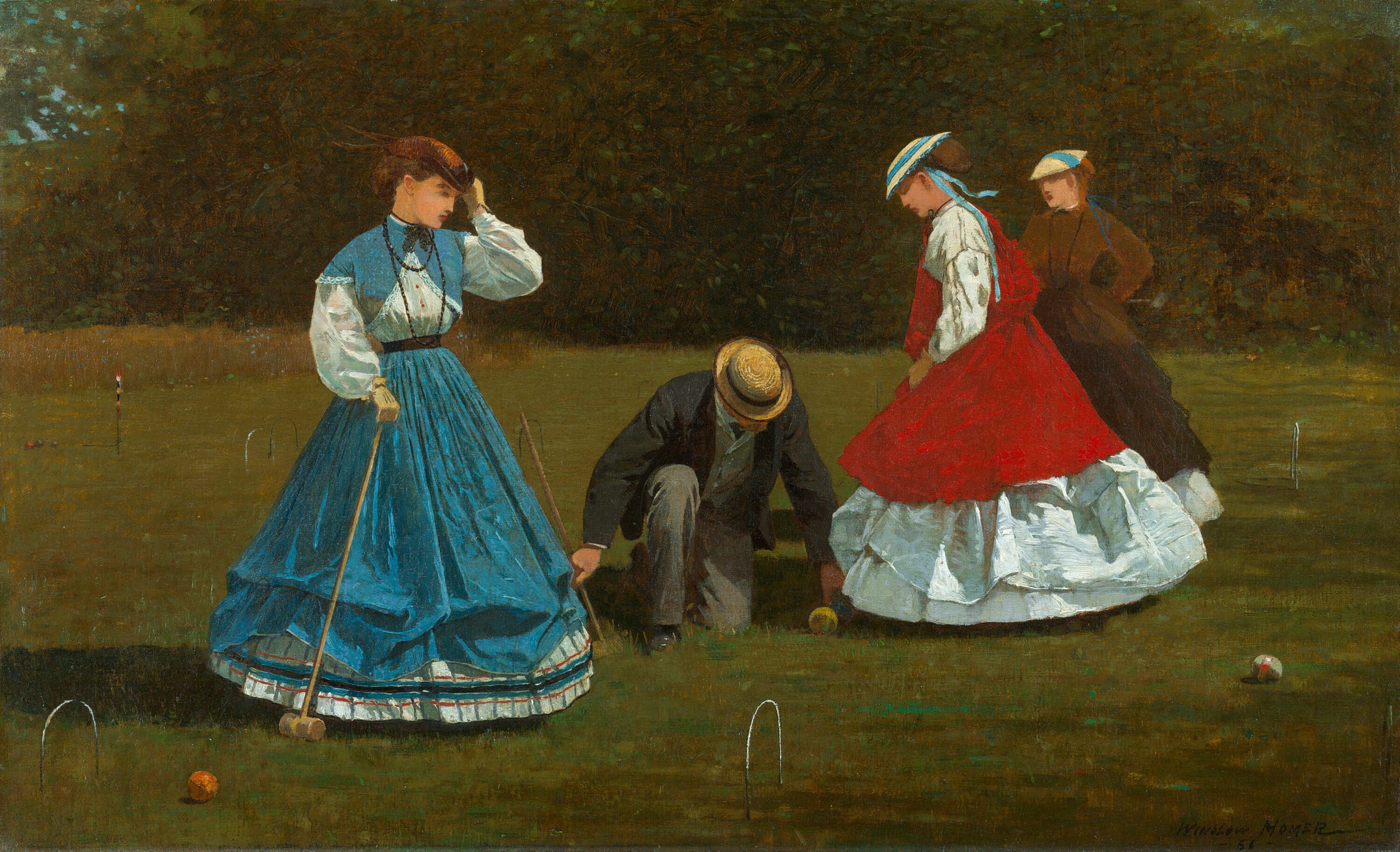
After serving as an illustrator during the Civil War, Winslow Homer turned to painting. His earliest paintings, like Croquet Scene, focused on outdoor scenes of figures lit by bright sunshine. Croquet had recently been introduced to the United States from England and Homer painted a series of five works showing well-dressed women and men playing the latest fad. The dramatic silhouettes of the figures against the greenish-brown grass and trees reflect Homer’s commitment to the Realist style. In tiny details, I recognize the game I’ve played with my family, but I can’t imagine playing summer yard games swathed in those 19th century clothes. Can you?
In contrast to the previous rural scenes, we have contemporary artist David Kapp’s painting of summer in the city. The urban landscape is Kapp’s primary theme and in this work we get a sense of the heat reflecting off the pavement and reducing the figures and objects to wavering silhouettes in the hot summer sun. The higher vantage point the artist chose separates the viewer from that hot environment. Who would want to leave the air conditioned building to walk those streets?

Summer in the city is also the subject of Faith Ringgold’s story quilt Tar Beach. In the center panel, four adults dine at a table on a Harlem roof while two children lie on a blanket looking up into the night sky. Visible beyond the building’s edge are other apartment blocks and the lights of one of the city’s bridges. Up among the stars is another image of the little girl flying through the night sky – completely free of the restraints of the ordinary world. As explained by the text panels incorporated into the quilt, the girl is named Cassie Louise Lightfoot, 8 years old and able to fly. “That means I am free to go wherever I want to for the rest of my life.” Ringgold’s Woman on a Bridge series is devoted to stories of this kind of female freedom. The artist transformed the story from Tar Beach into an award-winning picture book in 1991.
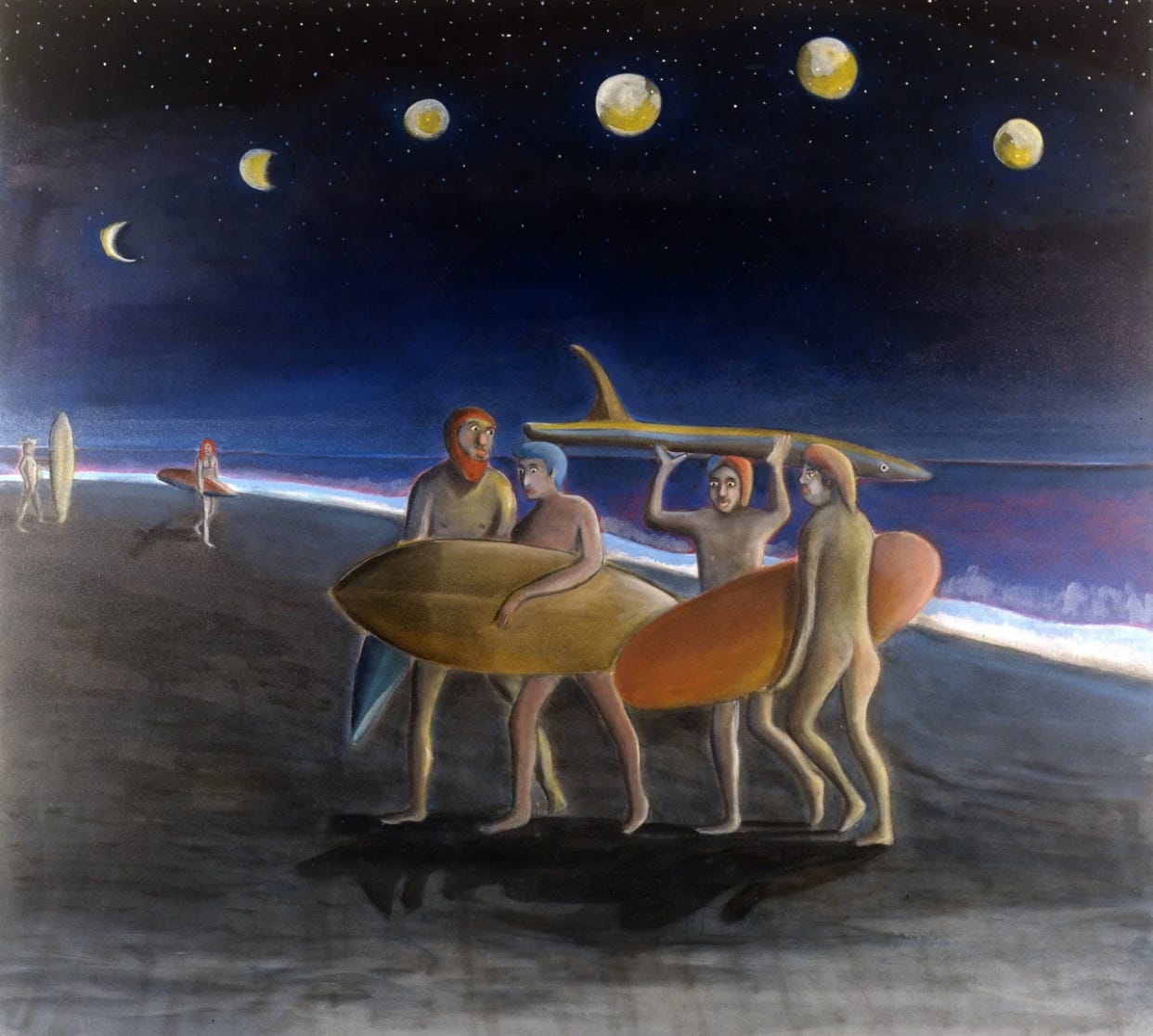
Another image that suggests breaking with the constraints of the ordinary world is Dan McCarthy’s Seven Summer Stories. Cartoonish nude surfers walk on a moonlit beach, but the moon appears six times in different phases, adding a mysterious note to the scene. The blended painterly background and simplistic figures add to the surreal quality of this work. Part of a series of beach scenes McCarthy exhibited in 2005, this painting seems more of a memory of summer than a record of an event captured in the moment.

Another summer night scene is seen in Ary Stillman’s Fireworks, Coney Island Boardwalk. In spite of the extremely painterly form, it’s clear that the beach and boardwalk are packed as fireworks burst above the ocean. Stillman was trained in traditional representational techniques, but his style evolved as he encountered contemporary styles in Chicago, New York, and Paris. He was employed in the Federal Art Project of the Works Project Administration during the Depression and this painting falls in that period. The style of Fireworks shows that Stillman was strongly influenced by Impressionist and Post-Impressionist art and represents his last phase of representational art. The flickering brush marks make the solid forms of people and buildings dissolve while the balls of light and the pinwheel colors of the fireworks seem to be the most solid objects.

I close with my favorite painting by Edward Hopper, Rooms by the Sea. When this work was created, Hopper was spending his summers on Cape Cod and had built a studio on a bluff overlooking the ocean. Thus, we can look at this painting as a variation on the real view from the studio. At the same time, the door of the depicted space appears to open directly into the ocean, a construction technique of doubtful wisdom. Like many of Edward Hopper’s compositions, this one contains echoing geometries – the rectangles of the doorway and walls and the polygons of light, incorporating an abstract quality to the work. Finally, to add another layer of meaning to the work, Hopper referred to this painting as “The Jumping Off Place” in his notebook - jumping off into what? This is what I love about Rooms by the Sea; it is real and unreal at the same time and it conveys my long-held idea of the ocean as a symbol of beauty and possibility.
Wherever this summer finds you, city or country, beach or mountains, or in your own backyard, have a wonderful season.
We’d like these posts to spark some conversation, so please share your comments, questions, or favorite summery artworks. Join us soon for another Chance Encounter with art.


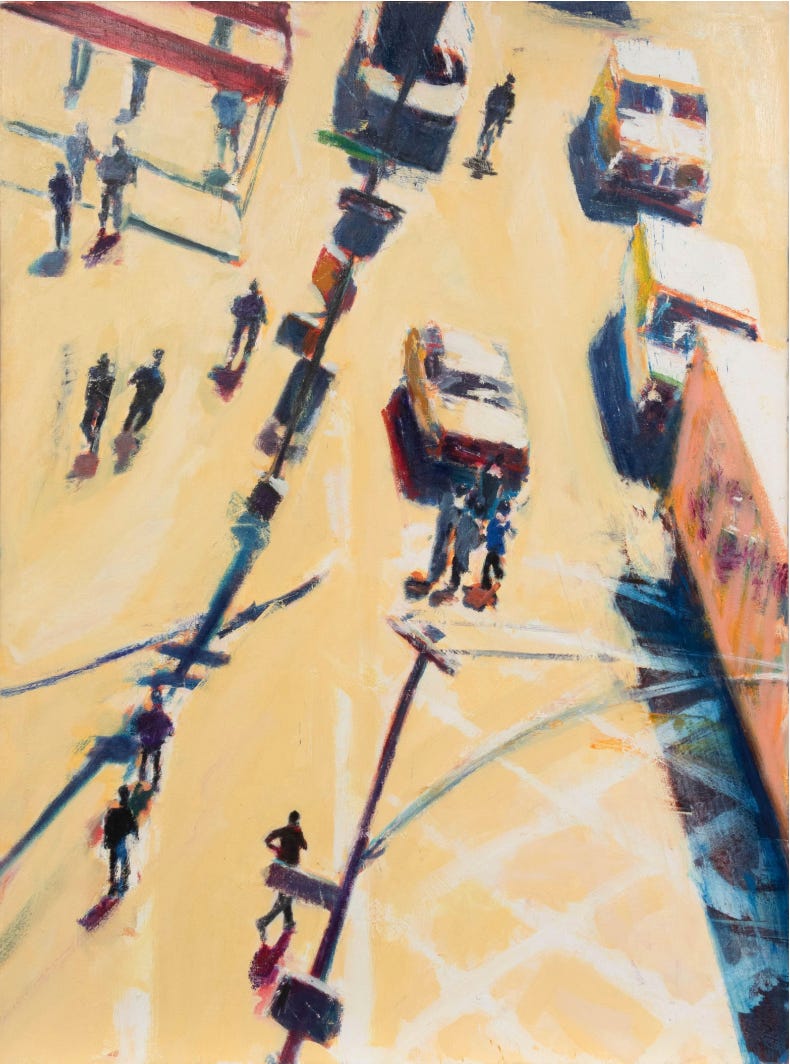
Having grown up in New York City, Tar Beach really speaks to me. I also love her use of the contrast between the warm border colors and the cool center colors. There is both visual depth, and emotional depth in this piece.
When I went in 1993 to buy the new Bruce Hornsby release cd, the entire cover was this painting, Hopper’s Rooms by the Sea. The name of the album was Harbor Lights. I always wondered what hoops he had to jump through to get that secured but he did it and gave us a renewed appreciation for the album cover art we used to enjoy as we listed to new music.